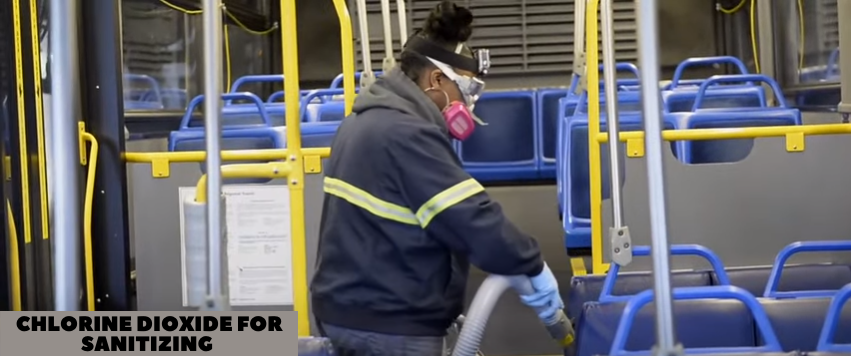Chlorine dioxide is a synthetic and green yellowish gas with an irritating odor. It is a neutral chlorine compound and is very different from elementary chlorine in both it’s behaviour and chemical structure. CO2 is a small, strong and volatile molecule.
Chlorine dioxide is one powerhouse sanitizer that is getting more and more attention these days as food processing looks for more efficacious products to theko them win the sanitation battle. It is approved by the US food and drug administration (FDS). It costs about the same to use as other sanitizers but is less harmful and versatile.

Benefits of chlorine dioxide (CO2):
- It has 2.6 times the oxidizing power of waterborne chlorine and provides it with a wide spectrum of sanitizing buses and making it outstanding against a host of bugs. It also produces as high as a 6 log reduction.
- CO2 is registered with EPA and is considered a great bactericide, antimicrobial and fungicide agent. Chlorine dioxide has passed the EAPs stringent DIS and TISS guidelines for use as a disinfectant and as a food contact surface sanitizer.
- Chlorine dioxide for sanitizing is currently under EPA review as a surface sanitizer for E. coil 0157:H7 and drug resistant salmonella. Besides, chlorine dioxide is under EPA review as a viricide for HIV and hepatitis A and for use as algaecide and viricide.
- It has a wider pH spectrum than chlorine and makes it more versatile and forgiving in different applications. It remains a try gas dissolved in solution. It has limited reactions with organics and indicates that more of the chlorine dioxide added to a system is available as a biocidal agent as well as is not consumed to the degree that chlorine would be under the same circumstances. Chlorine will react with abs be consumed by ammonia or amine while reacts slowly with secondary amines plus sparingly with primary amines or ammonia.
- The US Department of Agriculture has approved stabilized sodium chlorite and chlorine dioxide in food processing plants for sanitizing and controlling mold and bacteria.
CO2 has been found to be one of the most effective tools for dispersing biofilms and inhibiting the formation of future biofilms in some cases. This function is valuable in the small cooling towers of food processing facilities where food item contamination can contribute to heavy films. Biofilm is a polysaccharide film that protects and harbours viable bacteria colonies and makes the surface more difficult to disinfect and clean.